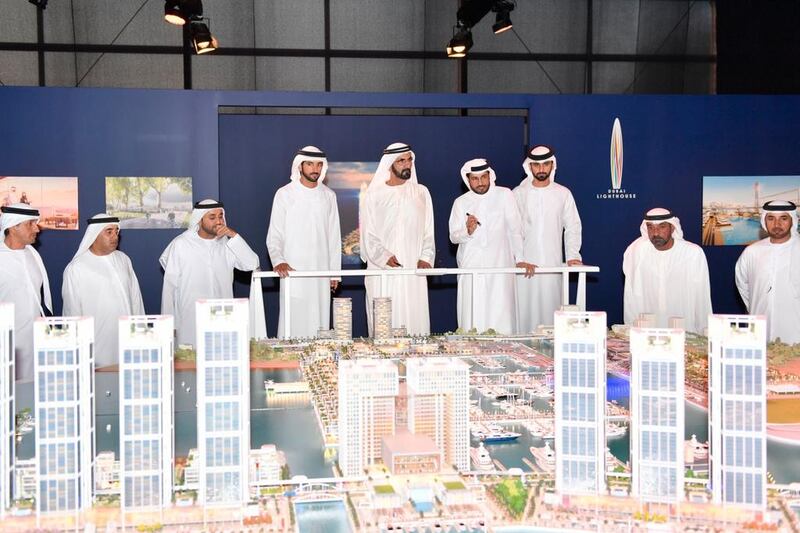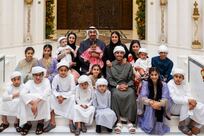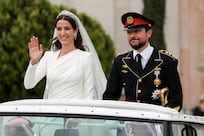The new Dubai Harbour project has been hailed by experts as a way for Dubai to make use of its existing strengths to create a new offering in the city without starting from scratch.
The 20 million square feet project which was unveiled by Sheikh Mohammed bin Rashid, Vice President and Ruler of Dubai on Monday, will help to create a mass of marina berths in an area adjoining Dubai Marina, as well as bringing cruise tourists into a part of the city that already gains some of the highest tourism footfall.
Dubai Harbour will be linked via a monorail to the new Bluewaters Island and to Palm Jumeirah. A footbridge will also link to the Palm’s west crescent.
Craig Plumb, the head of research for JLL Mena, said the project announcement was “typically Dubai” in terms of both its vision and scale.
“It’s very bold and ambitious, and it’s clearly ahead of its time in terms of the fact that the market doesn’t need more hotels or upmarket apartments right now, but at least they are positioning this for the future.”
In fact, given that the project is scheduled to take four years to complete and the clock only starts ticking once ground is broken (no indication has yet been given of when this will be), it is likely that Dubai Harbour will be delivered after Expo 2020 ends.
Mr Plumb says this is a good thing, as it allows development “over a sensible period of time”.
“This is life beyond Expo,” he said.
“Other developers have been doing the same thing. With Jumeirah Central, [Dubai Holding] is saying it’s a 20-year project – it’s not all going to be built in the next four years. It’s for the long-term tourism infrastructure of Dubai.”
Previously, there had been plans in the pipeline to build a cruise liner terminal at Dubai Maritime City close to the existing terminal at Sheikh Rashid port, but Mr Plumb said that the new location at Dubai Harbour made more sense in terms of its proximity [and physical links] to Jumeirah Beach Residences, Bluewaters Island and Palm Jumeirah.
Abdulla Al Habbai, the group chairman of developer Meraas Holding, said: “The project demonstrates our approach of thinking differently to create new opportunities that stimulate economic activity in this area.”
David Godchaux, the chief executive of Core Savills, said that Meraas has proved to be adept at building “lifestyle destinations”.
“Of course, it’s in the most touristic part of Dubai, but the fact that they are careful from the very beginning about the transport infrastructure is something that is very refreshing. We are moving away from a system where [Dubai was] building different communities and then thinking how to link everything, to thinking how to integrate and how to make it easy for people to commute from Bluewaters Island and the Palm to this place.
“You have this approach of connecting all of these neighbourhoods and making them better,” said Mr Godchaux. “It’s not like the creek [Dubai Creek Harbour], which is a massive project and some way out where there is nothing.”
Another joined-up element is the fact that the proposed cruise liner terminal is one of a number of such facilities being built around the region. Abu Dhabi Ports built a cruise terminal at Zayed Port in the city centre in 2015, and in Oman Sultan Qaboos Port in Muscat City Centre, a cruise liner terminal and new waterfront destination will be completed in 2020 after cargo operations were shifted to Sohar. In Bahrain, Abu Dhabi-based Eagle Hills has a cruise liner terminal as part of its US$3billion Marassi Al Bahrain project.
Mr Plumb said that it was “no good having one good port for cruise liners” in the region.
“You need a number of them, all within a reasonably short distance.”
mfahy@thenational.ae
Follow The National's Business section on Twitter







